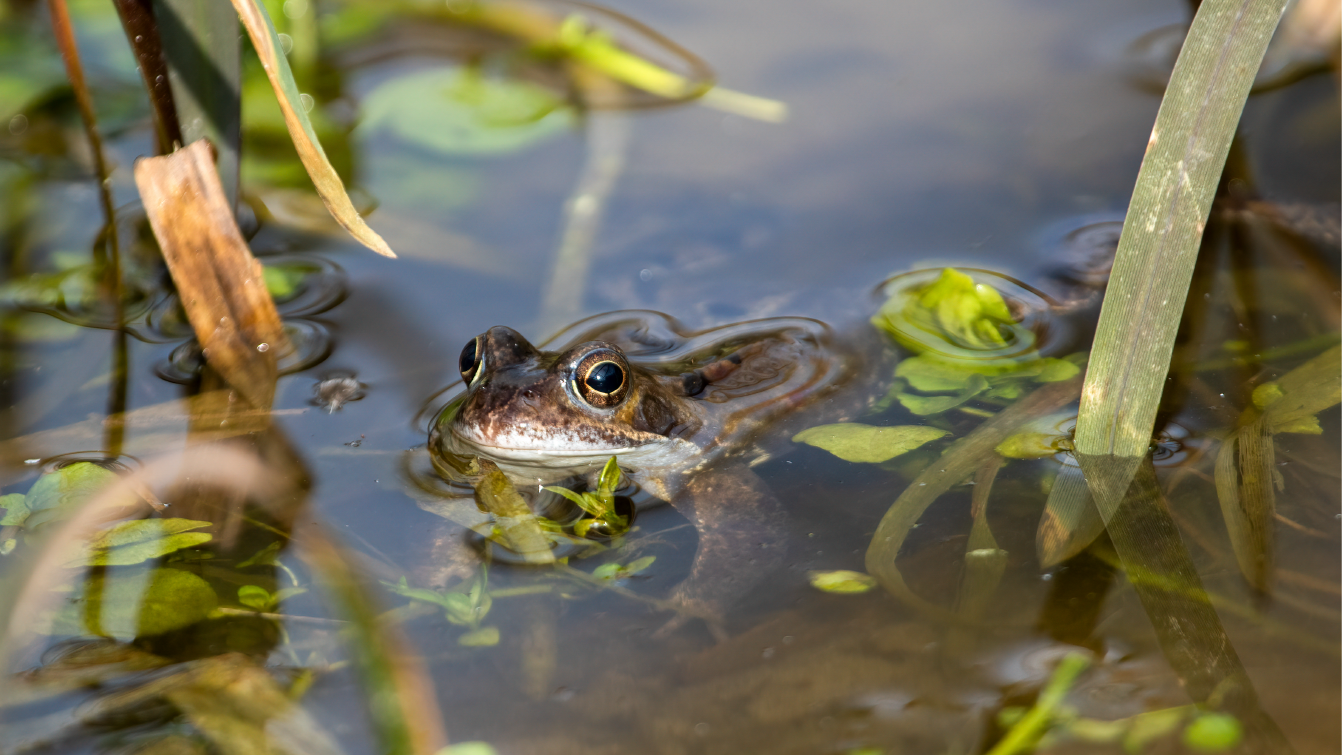29th May 2024
Water is a vital resource for wildlife. Not only is water important for drinking, but wildlife also use water for bathing, shelter, and to take in essential minerals.
Thankfully, we all have the power to make a difference!
Since a little goes a long way towards helping nature, explore our top tips on how you can provide water for wildlife…
Butterfly water station
Butterflies require water to access minerals that keep them healthy. However, butterflies can’t land on open water, so they opt for shallow puddles and soil to get the minerals they need. If you want to craft a water station for butterflies in your garden, or other outdoor space, you could follow these steps:
Step 1 – Choose a shallow dish, preferably around the size of a standard dinner plate, and place it near some butterfly-friendly plants.
Step 2 – Add a mixture of gravel, small stones, soil and/or sand to the dish.
Step 3 – Pour water into the dish, making sure the soil or sand is saturated, but not so much that the stones are covered by water.
Step 4 – Wait for beautiful butterflies to visit!
Top tip: Check the water level throughout summer months, and keep it topped up during hot weather.
Bird bath / water feeder
Our precious garden birds need water all year ‘round, so providing a water feeder for them is a wonderful way to support UK wildlife!
One of the best methods of offering water to wild birds is through a bird bath. But, keeping the bird bath clean and topped-up with fresh water is important – especially during warm weather and freezing temperatures.
Here’s a little inspiration if you’re searching for the best place to put your bird bath:
- Locating the bird bath near a tree, hedge, or shrub should help wild birds feel safer, as they can escape quickly if they spot a predator.
- You’ll need to be able to get the bird bath easily to clean and refill it, so it can be useful to put it near an outside tap. (Otherwise a long spout watering can will do the job!)
- Select somewhere that’s visible from your window, so it’s easier for you to shoo cats and other potential predators away if you notice them.
Hedgehog water station
Summer often brings with it days or even weeks without rain, which could leave poor hedgehogs thirsty and dehydrated. To support these special spiny visitors through warmer weather, you could put down low-level, shallow dishes of water at different locations around your garden, e.g. small pet drinking bowls.
Alternatively, if you enjoy DIY, you could create your very own self-filling hedgehog water station!
Mini pond
Water draws life to it, and in our UK gardens, pond habitats attract a wide range of wildlife – from birds and bats to frogs and newts. Luckily, developing a pond environment doesn’t have to be big or expensive!
Make your own mini pond by following these steps:
Step 1 – Decide where to build your mini pond. It’s best to locate your mini pond somewhere that’s not bathed in direct sunlight all day, in a place that isn’t easily accessed by pets and children.
Step 2 – Now you’ve found the perfect spot, you’ll need to choose a watertight container, e.g. washing-up bowl or large plant pot. If you don’t have a watertight container, you could add a small section of pond liner to cover any gaps.
Step 3 – Next, you’ll need to put some gravel and rocks onto the base of your mini pond, then add a couple of logs or large stones to allow wildlife an escape.
Step 4 – Let your mini pond fill with rainwater.
Step 5 – Once your mini pond is filled with rainwater, you can start adding small pond plants.
Step 6 – Await your magical wildlife visitors!

Wildlife pond
Developing your own wetland oasis is an amazing way to support local wildlife. However, creating a large pond is quite a big project, so it’s essential to plan properly and make sure you’re prepared for the work involved.
Step 1 – Select a safe site that’s in a corner of your garden, so it’s easier to section off from pets and/or children as needed.
Step 2 – Dig a hole that matches the size of whichever pond liner you’ve chosen.
Step 3 – Fit the pond liner, though you may need to adjust it several times before it sits correctly!
Step 4 – Fill the pond with rainwater, which you can collect in water butts ahead of time.
Step 5 – Weigh down the pond liner with rocks, soil, pebbles, and bricks, then add some wildlife-friendly plants.
Step 6 – It may take a few weeks, though you’ll soon get to enjoy the wonder of wildlife surrounding your new pond!
For more detailed instructions on how to build a wildlife pond, visit Wildfowl and Wetlands Trust’s amazing guide.
Please note: When building a wildlife pond, it isn’t recommended that you add fish because they can eat insects who are likely to visit.
How do you provide water for wildlife at home? Share your story with us via Facebook or Instagram!
Animal welfare blog
If you found this blog useful, why not visit our animal welfare blog to find more articles about animal at risk around the world?
From news and facts, to charities helping protect animals and the great work they do - find out more about animal welfare and those making a difference.
Charities we support
Every year we donate hundreds of thousands of pounds to charities - find out more about the charities we support.
